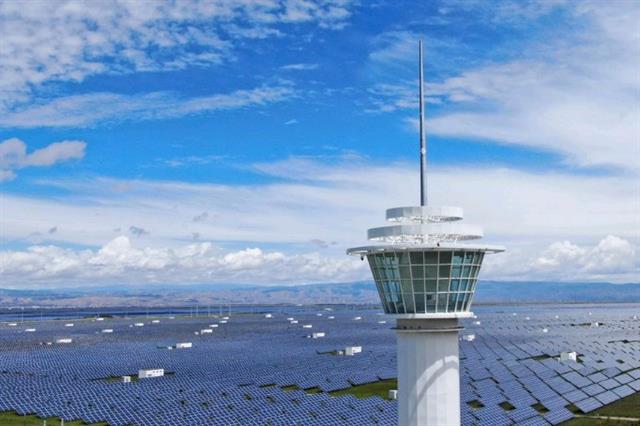For the photovoltaic industry, 2021, which is about to pass, is a historic year: a series of favorable policies were released to achieve carbon neutrality; Major technological breakthroughs were made in granular silicon, HJT, TOPCon, etc. to reduce cost and increase efficiency; The 182 mm and 210 mm alliances have formed to end the dispute over sizes.

However, none of these are as unforgettable as the surging price of silicon.
While polysilicon and silicon wafer manufacturers thrived in the first three quarters of 2021, wafer and module enterprises suffered a great deal. Although their revenue grew rapidly, their profits experienced dramatic fall.
The soaring industrial chain price has also deterred solar power station investors as the installed capacity in China in 2021 H1 is significantly lower than expected. Investment institutions have also lowered their estimation of annual installed capacity in 2021.
The whole solar PV industry, except for silicon manufacturers, is eagerly looking forward to the plunge of silicon prices. However, the world or the solar industry doesn’t always operate the way we want it to.
Similar past
Looking back on the decline of silicon prices from 2018 to 2020, silicon manufacturers have also experienced similar pain.
In April 2020, silicon prices hit an extremely low price of 56 yuan/kg. The reason behind is the quick expansion of production capacity following the rising prices of silicon in 2017, while the demand dropped after the new “531” policy, resulting in the oversupply of silicon from 2018 to 2020. For this reason, silicon enterprises have barely expanded their production capacity.
Silver lining
There is a saying in China, called “out of the depth of misfortune comes bliss”. On September 22, 2020, President Xi proposed the goal of carbon neutrality at the 75th United Nations General Assembly. Subsequently, he proposed at the Climate Ambition Summit that the total installed capacity of wind and solar will reach more than 1.2 billion kw by 2030. As a result, demand exploded in the solar PV market.
However, when there is an uphill road and a downhill road to choose, I’m afraid most people will choose the downhill road that seems to be more labor-saving and less risky in the short term. The same is true for the PV industry. Midstream industries with lower technical barriers and capital intensity and shorter production expansion cycle have become the first choice for “smart” investors. Everyone was optimistic about the future.
Supply-demand mismatch
What appears to be “cheap” are often the most expensive. Any irrational group behavior comes at a price.
Since the first quarter of this year, the price of monocrystalline silicon has surged from about 90,000 yuan/ton to over 300,000 yuan/ton. In addition to the significant increase in market demand, the soaring capacity of the middle reaches of the industrial chain is another reason behind.
According to Wind, by the end of 2021, the design capacity of silicon wafer, cell and module will reach 350 GW, 455 GW and 461 GW, with a year-on-year increase of 76%, 69% and 44% respectively, while the production capacity of silicon will only increase by about 50%.
Moreover, newly established silicon manufacturing plants can only reach their design capacity by 2022. According to Solarbe Consulting’s latest data, the price of silicon remained at a high level of 270,000 yuan/ton in the third week of November. And there is little possibility of decline in December.
Perhaps the soaring price of silicon has hurt the nerves of downstream enterprises. For the supply chain safety, downstream enterprises have also begun to build production capacity with silicon enterprises. For example, Shangji Automation participated in the capacity expansion of GCL, and Tongwei set up JVs with LONGi, Trina Solar, JYT Corp, Shangji Automation and other enterprises to expand capacity. With the financial support of downstream enterprises, the release of silicon capacity might be just around the corner.
Difficulty might remain
Data shows that the design capacity of silicon material will reach 1,027,300 tons in 2022, an increase of 184% over 2021. Therefore, the supply of silicon will be significantly improved in 2022.
Driven by the installation targets of wind and solar and multiple favorable factors, the installed capacity of solar PV is expected to maintain a high-speed growth during the 14th Five Year Plan period. In addition, the US and Indian governments have recently exempted or reduced import tariffs on photovoltaic products, so the demand in overseas markets will also increase significantly.
Although silicon supply will increase significantly in 2022, the market demand will also rise simultaneously. Therefore, the supply and demand pattern of silicon will not change much. Some experts predict that silicon price may fall to less than 200,000 yuan/ton in 2022, but may hardly fall below 150000 yuan/ton. The situation may remain difficult for midstream and downstream manufacturers.
United we rise
There are no more than two high value-added processes in other industries: one is direct contact with consumers, and the other is high technical barriers. Today’s photovoltaic industry, however, seems to have taken another route. Production capacity has become a key factor affecting the profit distribution of the industrial chain.
Of course, this is only a phased feature of the growing industry. However, this has generated opportunity costs in the first year of “carbon neutralization”–the installed capacity should have exceeded expectations. This is not the fault of a silicon enterprise or any other enterprise. It is the result of disorderly development and lack of coordination among all links of the industrial chain.
United we rise, divided we fall. A good thing is that communication and cooperation among enterprises are growing. The relationship between enterprises is gradually transformed from competition to common prosperity. For the photovoltaic industry, when the goal of “carbon neutralization” has become a global consensus, the strategic decision-making of enterprises should focus on the overall benefit, instead of their own self-interest.


